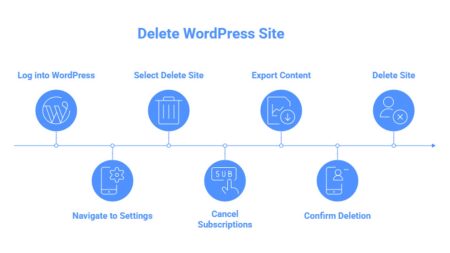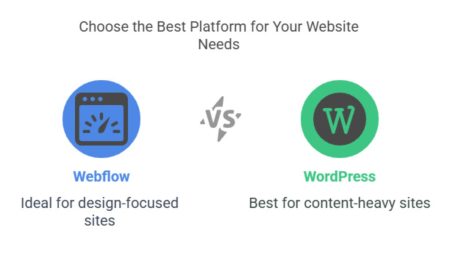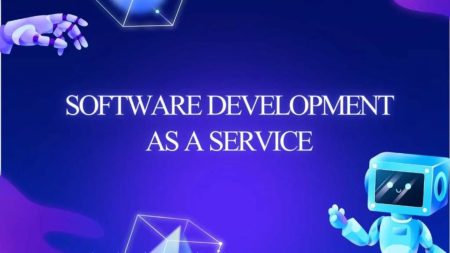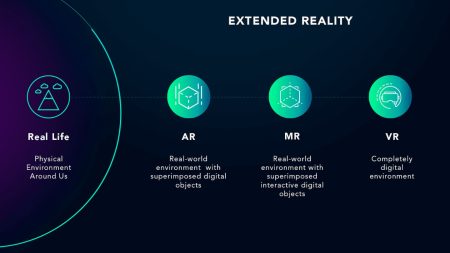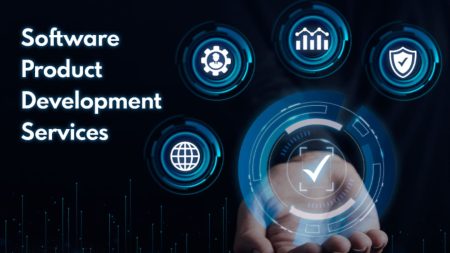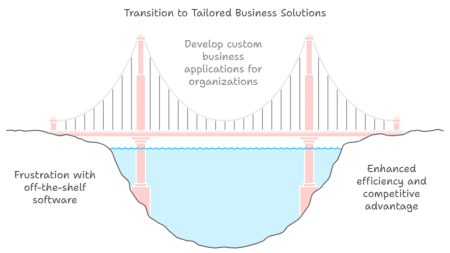Ways to Build Better Software
Ever wonder how your favorite apps come to life? It’s not magic, but a well-orchestrated dance of planning, coding, and testing. Software development models are the choreography behind this dance. They guide teams to deliver quality software without tripping over their own feet. Let’s dive into the world of software development life cycle models and explore how they shape the tech we love.
What are Software Development Models?
Picture a recipe for your favorite dish. You need ingredients, steps, and a pinch of patience. Software development models are like that recipe for building software. They outline the phases – planning, designing, coding, testing and deployment – to create a functional product. These models, often called SDLC models, provide structure to the chaos of creation. Why need different software development models? Without them, developers might feel like sailors lost in a storm. Because software isn’t built in a day. A 2021 study by the Standish Group found that 66% of software projects fail due to poor planning or execution. SDLC models reduce risks, streamline tasks, and keep teams on track. They’re the compass for navigating the software development process models.
The Waterfall Model is the Classic Blueprint
Imagine building a house. You lay the foundation, erect walls, then add the roof. The Waterfall model, one of the earliest types of software development life cycle, works the same way. Each phase – requirements, design, implementation, QA testing, and maintenance – flows into the next. No going back, like water cascading down a cliff. This software development model shines for projects with clear, unchanging requirements. For example, NASA used Waterfall for the Apollo missions’ software, where precision was non-negotiable. But here’s the catch: it’s rigid. If requirements shift mid-project, you’re stuck rebuilding. A 2020 report by PMI noted that only 23% of Waterfall projects meet their original scope, showing its limits in dynamic environments. So, when should you use it? If your project is as predictable as a sunrise, Waterfall is your friendly software model. Otherwise, you might feel like you’re trying to herd cats.
The Agile Model for Flexibility
Ever tried juggling? Agile is like that – keeping multiple tasks in the air while adapting to surprises. Unlike Waterfall, this full cycle software development model embraces change. Teams work in short cycles called sprints, typically 2-4 weeks, delivering small, functional pieces of software. Feedback shapes the next steps, making it ideal for projects where requirements evolve. Agile’s popularity is no fluke. A 2023 VersionOne survey found that 95% of organizations use Agile in some form, with 87% reporting improved team collaboration. Take Spotify – it uses Agile to roll out new features weekly, staying ahead in the streaming wars. However, Agile demands discipline. Without clear communication, teams can spiral into chaos, like a band without a conductor. For example, if you’re building an app with shifting user needs, Agile lets you pivot fast. But beware: it’s not a free-for-all. Success hinges on tight teamwork and constant feedback.
The Scrum Framework is Agile’s Team Player
Scrum is Agile’s energetic cousin, a software development process model that thrives on collaboration. Teams work in sprints, guided by roles like Product Owner, Scrum Master and Developers. Daily stand-up meetings keep everyone aligned, like a huddle before a big play. Artifacts like backlogs and sprint goals ensure focus. Why does Scrum work? Because it’s human. A 2022 Scrum Alliance study showed that 89% of Scrum teams report higher job satisfaction. Companies like Google use Scrum to tackle complex projects, delivering updates to tools like Gmail seamlessly. On the other hand, Scrum can falter without commitment. If team members skip meetings or ignore priorities, progress stalls. In other words, Scrum is perfect for teams who love structure but crave flexibility. It’s like a jazz band – everyone improvises, but the rhythm stays tight.
The Kanban Model Helps Visualize the Flow
Picture a whiteboard covered in sticky notes. That’s Kanban, a software development life cycle model that visualizes workflows. Tasks move through columns like “To Do,” “In Progress,” and “Done.” It’s simple but powerful, helping teams spot bottlenecks before they clog the pipeline. Kanban’s strength lies in its clarity. A 2021 Kanban University report found that 76% of teams using Kanban cut delivery times by at least 20%. Trello, the project management tool, was built with Kanban principles, enabling smooth feature rollouts. However, Kanban lacks rigid timelines, which can frustrate teams needing strict deadlines. For example, if your team juggles multiple projects, Kanban keeps everyone sane. Just don’t expect it to enforce deadlines like a drill sergeant.
The Spiral Model is Paradise for Risk-Taker’s
Building custom software solutions can feel like exploring a dark cave. The Spiral model, one of the more intricate types of software development models, lights the way by focusing on risk. It combines Waterfall’s structure with iterative cycles, assessing risks at each “spiral.” Prototypes are built early, tested and refined. This software development modeling approach suits high-stakes projects. Boeing used Spiral for its 787 Dreamliner’s software, where failure wasn’t an option. A 2019 IEEE study noted that Spiral reduces project risks by 30% compared to Waterfall. But it’s costly and complex, demanding skilled teams and ample resources. Therefore, if your project is a high-wire act with big risks, Spiral keeps you balanced. For smaller ventures, it’s like using a sledgehammer to crack a walnut.
The V-Model for Testing at Every Step
Imagine a V-shaped ladder. The V-Model, a software development model, pairs each development phase with a testing phase. Requirements link to acceptance testing, design to system testing and so on. It’s like double-checking your math before submitting homework. The V-Model excels in regulated industries. For instance, medical device companies like Medtronic use it to meet FDA standards, where errors can be catastrophic. A 2020 Gartner report found that V-Model projects have a 15% lower defect rate than Waterfall. On the other hand, it’s inflexible, struggling with late-stage changes. In conclusion, V-Model is your go-to for projects where quality trumps speed. It’s not flashy, but it gets the job done right.
The DevOps Approach (When Speed Meets Stability)
What about Dev Ops in software models? DevOps is less a model and more a culture, blending development and operations for seamless delivery. This software development process model emphasizes automation, continuous integration, and collaboration. Code is deployed frequently, often multiple times a day. Why the hype? A 2023 DORA report revealed that elite DevOps teams deploy 208 times more often than low-performing ones. Netflix, a DevOps pioneer, pushes updates daily, keeping its platform glitch-free. However, DevOps (as well as software development as a service) requires heavy investment in tools and training, which can daunt smaller teams. Basically, if you want to move fast without breaking things, DevOps is your engine. Just buckle up for the upfront costs.
Life Hack for Choosing the Right Model
Picking a software development life cycle model is like choosing a travel route. There’s no one-size-fits-all. Waterfall suits predictable projects, Agile thrives on change, and DevOps demands speed. Consider your team’s size, project complexity, and client needs. A 2022 McKinsey study found that 70% of successful projects align their SDLC model with project goals from the start. Here’s a quick hack: map your priorities. Need stability? Try V-Model. Crave speed? Go DevOps. Unsure? Agile’s flexibility is a safe bet. Above all, involve your team. A model that doesn’t fit their workflow is like a square peg in a round hole.
Common Pitfalls and How to Dodge Them
Even the best types of software development life cycle can trip you up. Poor communication sinks 56% of projects, per a 2021 PMI report. Agile teams often overcommit, while Waterfall projects drown in scope creep. DevOps can falter without proper tools. How do you stay afloat? Set clear goals early. Use tools like Jira or Trello to track progress. Foster open dialogue – daily stand-ups or weekly reviews work wonders. For example, a 2020 Harvard Business Review study showed that teams with regular feedback loops cut errors by 25%. In short, anticipate hiccups. Plan, communicate and adapt. It’s not rocket science, but it’s close.
The Future of Software Development Models
What’s next for software development modeling? Hybrid models are rising. A 2023 Forrester report predicts that 60% of organizations will blend Agile, DevOps, and Kanban by 2026. AI is also shaking things up, automating testing and code reviews. GitHub’s Copilot, for instance, boosted developer productivity by 55%, per a 2022 study. But don’t get starry-eyed. New tools demand new skills. Teams must evolve, or they’ll be left in the dust. For now, mastering today’s different SDLC models sets you up to ride tomorrow’s wave.
How to be Deal?
Software development models are your roadmap to building great software. From Waterfall’s steady march to Agile’s nimble dance, each model offers tools to tame the chaos of creation. Pick the right one, dodge common traps and keep your team aligned. The result? Software that delights users and stands the test of time. So, next time you’re staring at a blank codebase, ask yourself: which model fits my journey? Choose wisely, and you’ll turn ideas into reality without breaking a sweat. Happy coding!


